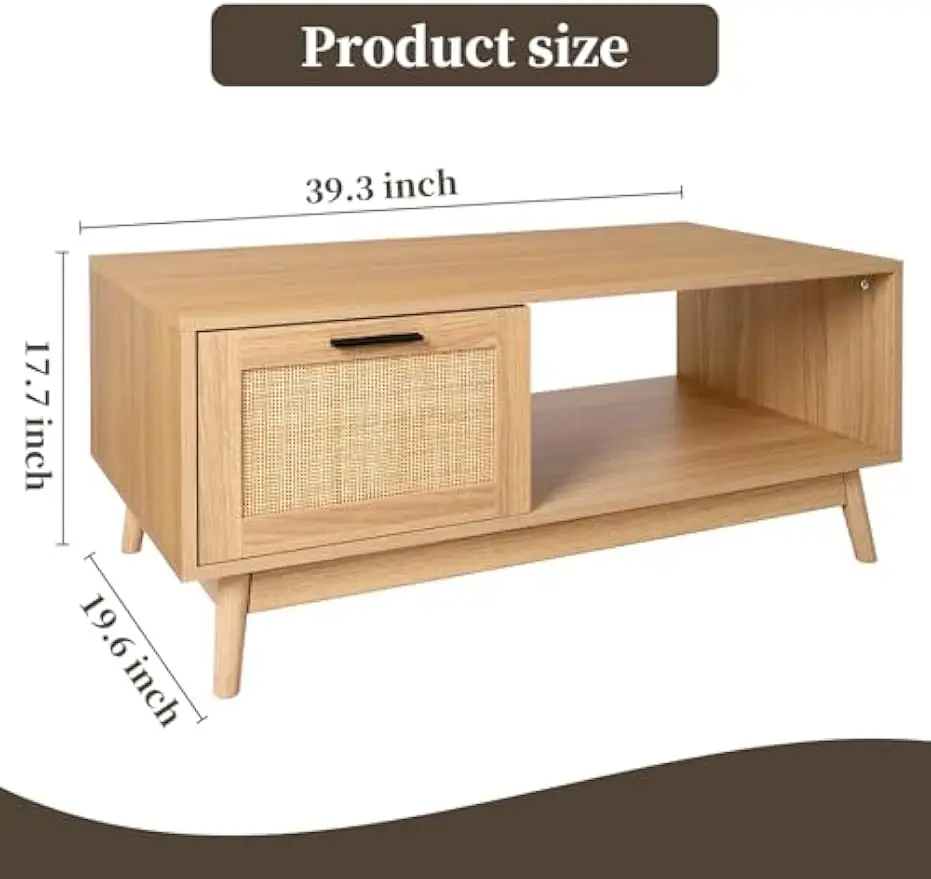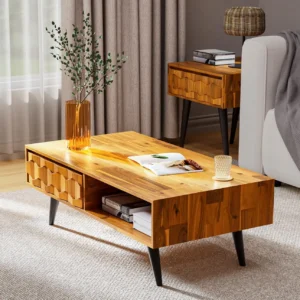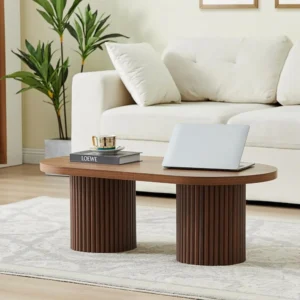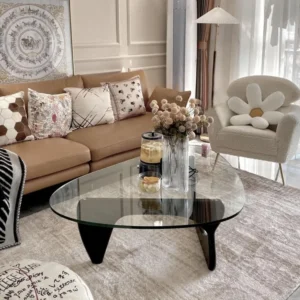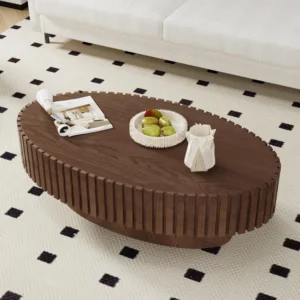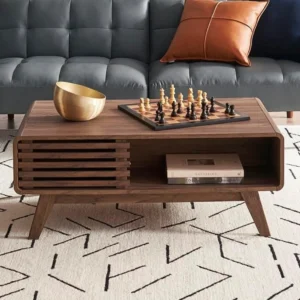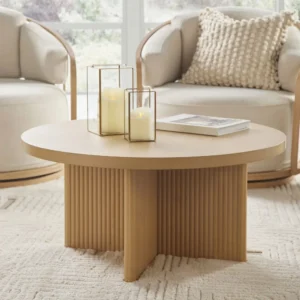In the world of fine furniture, few materials command the respect and admiration that teak does. Iconic teak tables stand as perfect examples of how superior materials, exceptional design, and masterful craftsmanship can transform functional objects into timeless works of art. These pieces are not merely surfaces to hold our belongings or meals—they are expressions of design philosophy, showcasing the perfect marriage between natural beauty and human ingenuity.
What makes a teak table truly “iconic” goes far beyond its utility. It’s about the inherent qualities of the wood itself—its remarkable durability and distinctive appearance. It’s about the visionaries who recognized teak’s potential and incorporated it into designs that have remained relevant and desirable for generations. And it’s about the skilled artisans whose techniques bring out the best in this remarkable material.
Throughout history, these tables have maintained their popularity not because of passing trends but because of their enduring quality and beauty. Many intelligent black mid-century coffee tables share design principles with their teak counterparts, demonstrating how these iconic elements transcend materials.
In exploring these remarkable pieces, we’ll discover the unique material properties that make teak exceptional, trace its important role in design history, examine the craftsmanship that elevates these tables to icon status, identify the distinguishing features of truly special pieces, and understand why they represent not just furniture, but valuable investments.
The Foundation of Excellence: Inherent Qualities of Teak Wood
What makes teak the material of choice for so many legendary furniture designs? The answer lies in its extraordinary natural properties that few other woods can match. Teak (Tectona grandis) stands apart from other furniture woods through a remarkable combination of beauty and performance characteristics that make it ideal for creating enduring pieces.
Unlike many woods that deteriorate rapidly with exposure to the elements, teak possesses inherent qualities that allow it to maintain its integrity and beauty for decades—even centuries—with minimal maintenance. These natural advantages explain why master designers gravitated toward teak when creating pieces intended to stand the test of time.
Examples of these exceptional qualities can be seen in our curated mid-century modern teak coffee tables that showcase the material’s remarkable properties. Each table tells a story of natural excellence transformed through thoughtful design.
The Power of Natural Oils: Built-in Resilience
Teak’s legendary durability stems largely from its exceptional natural oil content. Unlike most woods that require regular applications of protective finishes, teak comes equipped with its own built-in protection system. These natural oils, including silica and rubber compounds, permeate the wood’s cellular structure, creating an effective barrier against moisture, insects, and decay.
The high concentration of these protective oils is what gives teak its slightly waxy feel when unfinished and contributes to its remarkable water resistance. When water contacts the surface of teak, it typically beads rather than absorbs—a natural protection mechanism that has made teak the preferred choice for maritime applications for centuries before it became prized in furniture.
This natural resilience explains why many unique teak grain patterns furniture pieces maintain their structural integrity and beauty even after decades of use in challenging environments. The wood’s natural protective qualities mean it can withstand conditions that would quickly damage or destroy other furniture woods.
Unmatched Strength and Stability: The Dense Grain of Teak
Teak’s exceptional density and tight grain structure provide remarkable physical stability that prevents the warping, cracking, and splitting common in other woods. With a density of approximately 41-45 pounds per cubic foot (655-720 kg/m³), teak falls into the medium-heavy hardwood category—dense enough for excellent durability but not so heavy as to be impractical for furniture.
This density, combined with a relatively straight and even grain pattern, results in exceptional dimensional stability. When properly seasoned, teak maintains its shape with minimal movement regardless of humidity fluctuations or temperature changes. This stability is crucial for maintaining the precise proportions and clean lines characteristic of many iconic designs.
When comparing hardwood vs softwood coffee tables, teak’s superior hardwood properties—including its resistance to denting and wear—become even more apparent. These physical attributes ensure that tables maintain their original design integrity for generations.
A Canvas of Natural Beauty: Teak’s Color and Grain
Beyond its functional qualities, teak possesses a distinctive aesthetic character that designers have celebrated for generations. Fresh teak displays a rich golden-brown color that ranges from honey tones to deeper amber hues depending on the tree’s age and growing conditions. This warm coloration creates an inviting presence that enhances virtually any interior design approach.
The grain typically runs straight with occasional, subtle variations that add visual interest without becoming overly dominant. Dark streaking sometimes appears, creating natural contrast that furniture makers often highlight through thoughtful board selection and arrangement. The wood’s surface has a naturally smooth feel with a subtle luster even before finishing.
These aesthetic qualities complement the clean lines and organic forms found in many mid-century modern solid wood coffee tables, where the material’s natural beauty becomes an integral part of the design rather than simply a construction material.
The Mark of an Icon: Design History and Timeless Aesthetics
Understanding what makes certain teak tables truly iconic requires exploring the historical context in which they emerged. The mid-20th century witnessed a perfect convergence of material availability, design philosophy, and manufacturing capability that elevated furniture design to new heights of refinement and accessibility.
Teak tables achieved their legendary status not just through material excellence, but through the vision of designers who recognized how this exceptional wood could express new design principles. By examining the movements and minds behind these pieces, we gain deeper appreciation for why they continue to be celebrated and sought after today.
Several key characteristics of Danish coffee tables directly relate to their masterful use of teak, demonstrating how material and design philosophy became inseparable during this golden age of furniture design.
Teak’s Golden Age: Mid-Century Modern and Danish Design Dominance
The period from the 1940s through the 1960s represented the pinnacle of teak furniture design, particularly within the Danish Modern and broader Mid-Century Modern movements. During this era, Scandinavian designers embraced teak’s natural qualities to create furniture that perfectly embodied their core design principles: functionality, simplicity, and natural beauty.
These designers rejected unnecessary ornamentation in favor of honest expression of materials and structure. Teak’s warm tones and straight grain offered the perfect counterpoint to the often sparse, geometric forms of modernist design, adding organic warmth to what might otherwise have felt austere. The wood’s natural characteristics became an essential design element rather than merely a construction material.
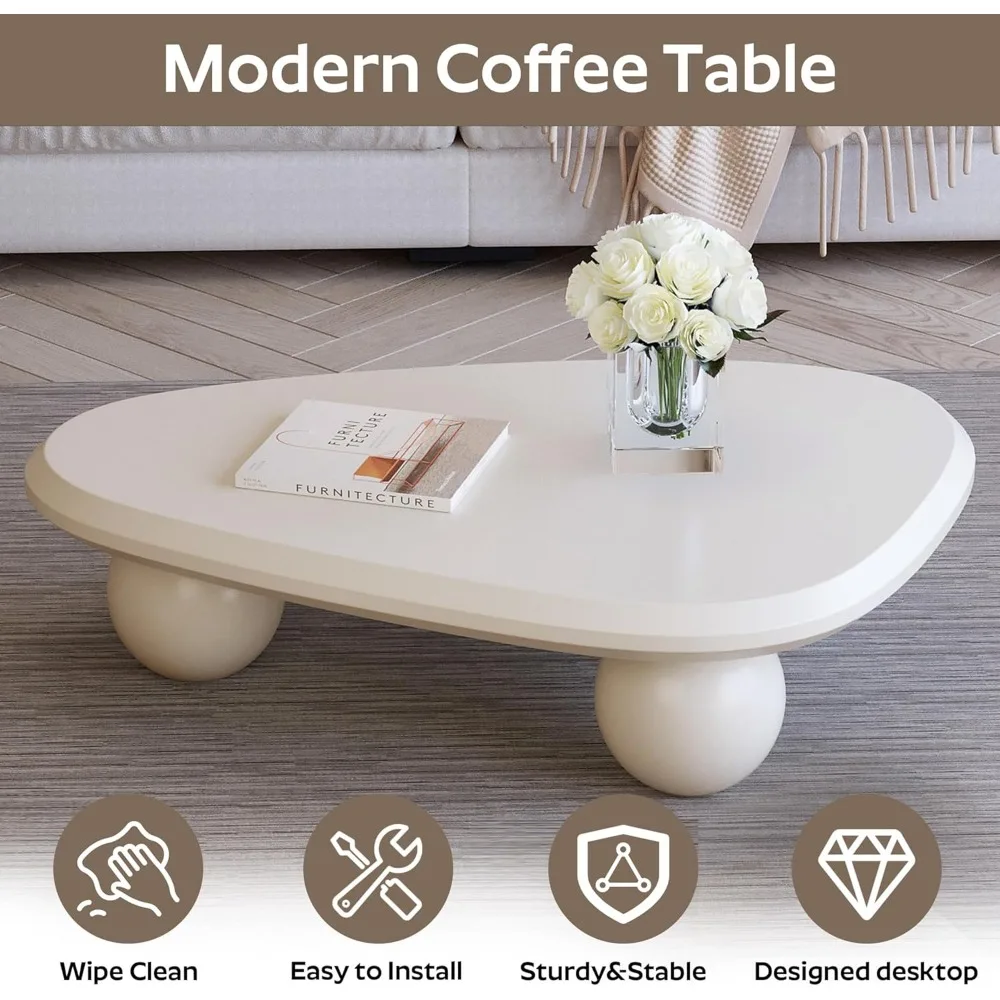
This design philosophy is beautifully represented in our collection of mid-century modern Danish coffee tables, where clean lines and organic shapes showcase teak’s natural beauty while serving clear functional purposes.
Masters of the Craft: Influential Designs and Their Legacy
What separates ordinary teak furniture from truly iconic pieces often comes down to the design intelligence behind their creation. The most celebrated teak tables typically feature distinctive elements that became hallmarks of their creators’ work—elements that continue to influence furniture design today.
Coffee tables often featured organic shapes with softly rounded edges that invited interaction while eliminating sharp corners. Dining tables demonstrated ingenious extension systems that maintained clean proportions whether accommodating everyday use or larger gatherings. Side tables and nesting tables showcased remarkable efficiency of form, often incorporating storage solutions within seemingly simple structures.
Distinctive leg designs—from the elegant taper to the more dramatic angle—created visual lightness that belied the material’s actual density. Table edges might be treated with shaped profiles that created shadow lines and enhanced the perception of thinness, making substantial pieces appear to float.
Many of these design principles can be observed across different materials, as seen in our collection of best black mid-century coffee tables, where the formal elements pioneered with teak have been successfully translated to different materials.
The Allure of Patina: Teak’s Graceful Aging Process
Unlike many furniture woods that deteriorate with age, teak undergoes a metamorphosis that many enthusiasts find even more beautiful than its original state. When left untreated and exposed to the elements, particularly sunlight and moisture, teak naturally develops a distinguished silver-gray patina that speaks to its age and authenticity.
This transformation—from golden brown to silvery gray—occurs as UV rays break down the surface oils and fibers, creating a protective layer that actually helps preserve the wood beneath. Importantly, this patina is purely a surface change that doesn’t compromise the structural integrity of the wood. Underneath this weathered exterior, the teak remains as strong and resilient as ever.
The appreciation for this natural aging process connects to broader vintage table design characteristics where signs of history and use are celebrated rather than hidden. This embrace of natural aging processes stands in stark contrast to the disposable furniture culture that would emerge in later decades.
Beyond the Wood: The Art of Craftsmanship in Iconic Teak Tables
Even the finest teak would fail to achieve iconic status without exceptional craftsmanship. The construction methods used in creating these pieces are as important as the material and design in determining their lasting quality and appeal. Master furniture makers employed time-tested techniques specifically suited to teak’s properties, ensuring that these tables would function flawlessly for generations.
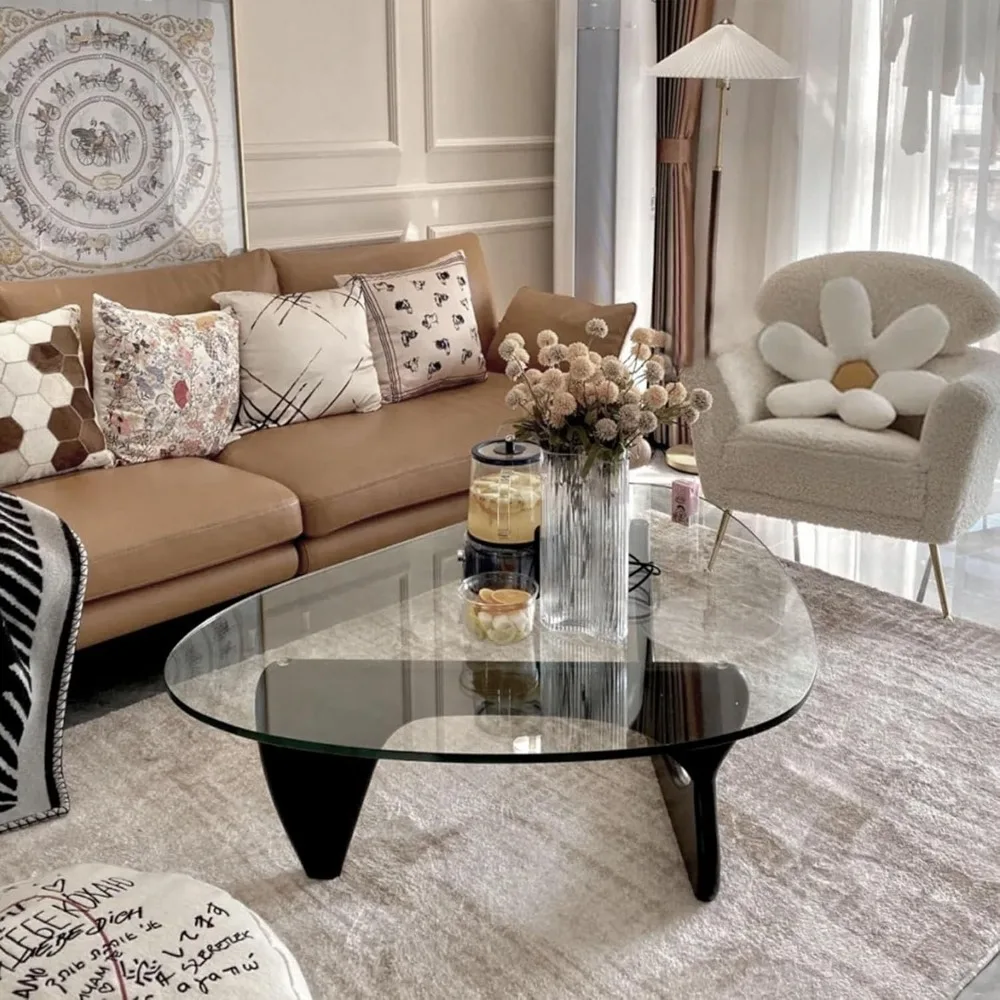
Built to Last: Superior Joinery and Construction Techniques
Iconic teak tables are distinguished by joinery methods that enhance both strength and beauty. Rather than relying on mechanical fasteners that can loosen over time, master furniture makers employed traditional woodworking joints specifically suited to teak’s properties:
Mortise and tenon joints—where a precisely shaped projection on one component fits into a corresponding cavity in another—provide exceptional strength for table legs and aprons while remaining virtually invisible in the completed piece.
Dovetail joints, recognizable by their interlocking wedge-shaped components, create nearly unbreakable connections, particularly important in drawers and storage elements where daily use places stress on the structure.
Finger joints distribute stress across multiple contact points, creating strong yet visually interesting connections that sometimes become featured design elements rather than hidden structural components.
These construction principles remain relevant across different materials and styles, as seen in black mid-century coffee table design, where structural integrity is just as important as in traditional teak pieces.
The Feel of Quality: Finishing and Detailing
The final steps in creating an iconic teak table often determine how it will be experienced by users. Surface preparation through careful sanding—often progressing through multiple grits to achieve exceptional smoothness—ensures that the tactile experience matches the visual appeal.
Unlike many woods that require heavy protective finishes, teak typically received minimal treatment—often just a light application of oil to enhance its natural color and grain. This approach allowed the wood to breathe and age naturally while maintaining its inherent beauty and protective qualities.
Small details often separate extraordinary pieces from merely good ones: perfectly flush joints, consistent edge profiles, smooth transitions between elements, and thoughtful proportion of all components. These nuances might go unnoticed individually but collectively create the unmistakable impression of quality that defines truly what makes teak table iconic.
Distinguishing the Iconic: What Sets These Teak Tables Apart
With teak furniture available across diverse price points, understanding what distinguishes truly iconic pieces from ordinary teak tables becomes essential for collectors, designers, and discerning homeowners. Several key factors separate exceptional teak tables from their more common counterparts.
Design Integrity and Authenticity
Truly iconic teak tables possess a clarity of design that speaks to their origin and purpose. Original pieces—whether vintage or contemporary—display balanced proportions and thoughtful details that make sense within their design language. Nothing appears arbitrary or added merely for decoration.
Authentic iconic designs typically show remarkable restraint—every element serves a purpose, whether structural, functional, or to create a specific visual effect. This disciplined approach to design ensures that these pieces remain relevant despite changing trends.
Understanding how these pieces fit within broader contexts of styles go well mid-century modern helps identify authentic design languages versus superficial imitations that incorporate mid-century elements without comprehending their underlying principles.
Quality of Materials: Beyond Just “Teak”
Not all teak is created equal, and iconic pieces typically feature premium grades of the wood selected for optimal appearance and performance. Old-growth heartwood—the densest, most oil-rich portion from mature trees—offers superior durability and more consistent coloration than younger plantation teak.
Board selection and matching reveal a maker’s attention to detail. Premium pieces feature thoughtfully arranged grain patterns that complement the design rather than random board placement. Consistent color tone throughout the piece (except where deliberate contrast is desired) indicates careful material selection.
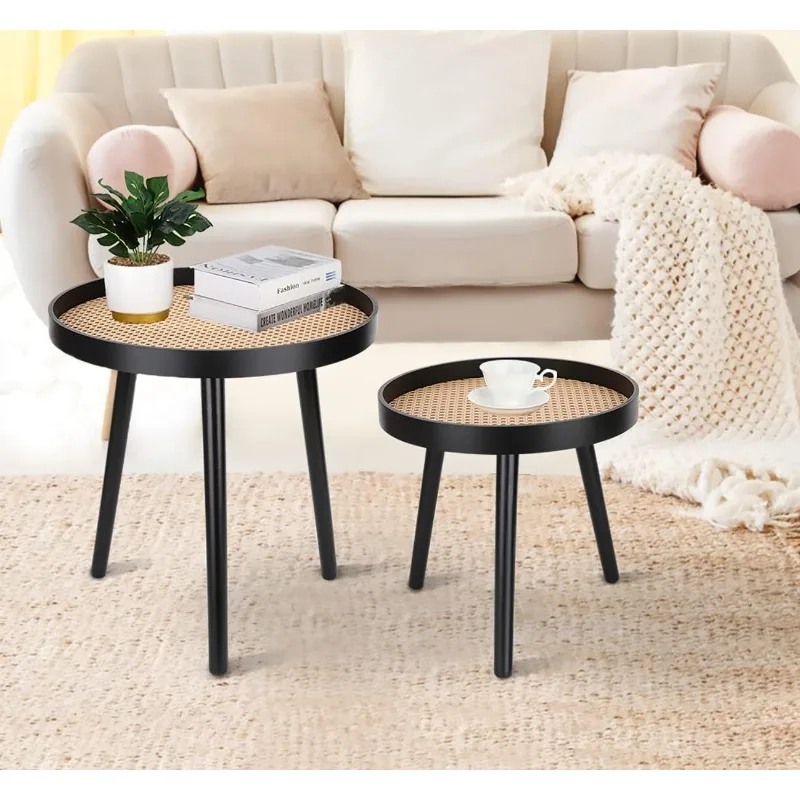
Understanding variations in teak quality connects to broader knowledge about materials in vintage tables, where material selection directly impacted both appearance and longevity of the finished piece.
The Test of Time: Enduring Appeal and Functionality
Perhaps the most definitive characteristic of iconic teak tables is their continued relevance decades after creation. These pieces transcend their era of origin, functioning as effectively in contemporary settings as they did when first introduced.
This timelessness stems from fundamental design principles: honest expression of materials, thoughtful proportion, and clear functionality without unnecessary elements. These qualities ensure the pieces never appear dated or tied to specific short-lived trends.
The enduring nature of these designs is evident in our collection of mid-century modern vintage coffee tables, where original pieces continue to serve beautifully in modern contexts despite being created decades ago.
Mid-Century Modern Solid Wood Coffee Tables, Mid-Century Modern Teak Coffee Tables
$879.95 Select options This product has multiple variants. The options may be chosen on the product pageMid-Century Modern Danish Coffee Tables, Mid-Century Modern Oval Coffee Tables, Mid-Century Modern Solid Wood Coffee Tables
$390.05 Select options This product has multiple variants. The options may be chosen on the product pageMid-Century Modern Glass Top Coffee Tables, Mid-Century Modern Vintage Coffee Tables, Mid-Century Modern Vintage Side & End Tables
$725.36 Select options This product has multiple variants. The options may be chosen on the product pageMid-Century Modern Oval Coffee Tables, Mid-Century Modern Solid Wood Coffee Tables
$679.56 Select options This product has multiple variants. The options may be chosen on the product pageMid-Century Modern Solid Wood Coffee Tables, Mid-Century Modern Walnut Coffee Tables
$501.53 Select options This product has multiple variants. The options may be chosen on the product pageMid-Century Modern Round Coffee Tables, Mid-Century Modern Solid Wood Coffee Tables
Price range: $522.31 through $559.78 Select options This product has multiple variants. The options may be chosen on the product page
Investing in an Icon: The Value of Authentic Teak Tables
Beyond their aesthetic and functional qualities, iconic teak tables offer practical benefits that make them worthy investments rather than mere expenses. Understanding these advantages helps explain why these pieces command premium prices and why they often represent sound long-term investments.
More Than Just Furniture: Value Retention and Appreciation
Unlike mass-produced furniture that rapidly depreciates, authenticated iconic teak tables tend to maintain—and often increase—their value over time. This value stability stems from several factors: diminishing supply of original vintage pieces, enduring demand from collectors and design enthusiasts, and the inherent quality that allows them to remain functional for generations.
Key elements affecting investment potential include design significance (pieces by recognized designers typically command higher values), condition (well-maintained examples with original finishes), and provenance (documented history of ownership and authenticity).
These tables complement various interior styles, and understanding approaches to decorating black mid-century coffee tables provides insights into how these versatile pieces can adapt to changing design preferences while maintaining their value.
A Legacy Piece: Durability for Generations
Perhaps the most practical benefit of investing in an iconic teak table is the generational durability it offers. While lesser furniture might serve adequately for years, these exceptional pieces can function flawlessly for decades or even centuries with proper care.
This extraordinary longevity transforms furniture buying from a recurring expense to a one-time investment in a functional heirloom. Many families treasure these pieces not just for their material value but for the memories and history they contain as they pass from generation to generation.
Sustainable Style: The Eco-Conscious Choice
In an era of increasing environmental awareness, the sustainability of iconic teak tables deserves recognition. Investing in vintage pieces represents a form of recycling that prevents additional resource consumption. For new production, responsibly sourced teak ensures the species’ continued availability.
The “buy once, buy well” philosophy embedded in these pieces stands in direct contrast to disposable furniture culture, offering an environmentally sound alternative that reduces waste and resource consumption over time.
Is the Price of an Iconic Teak Table Justified?
When confronting the often substantial price tags attached to authentic iconic teak tables, many wonder whether the investment is truly justified. The answer lies in understanding the total value equation beyond mere material costs.
The price of these pieces reflects not just the premium materials, but the design intelligence, skilled craftsmanship, and proven durability they offer. When calculated over their potential lifespan of many decades, the cost per year of ownership often proves lower than repeatedly replacing less expensive alternatives.
Additionally, the daily pleasure derived from living with exceptional design represents a value difficult to quantify but meaningful nonetheless. The satisfaction of owning and using a piece that perfectly balances form and function adds immeasurably to quality of life.
Are Original Iconic Teak Tables Worth Restoring?
When considering vintage teak tables that may show signs of age or previous ownership, restoration questions naturally arise. In most cases, iconic teak pieces are indeed excellent candidates for thoughtful restoration that preserves their value while enhancing functionality.
The best approach typically involves minimal intervention—addressing structural issues while maintaining original patina and character wherever possible. Over-restoration can actually diminish value by removing the natural aging that collectors prize. Professional restoration by specialists familiar with mid-century pieces generally yields the best results.
For pieces with good “bones” but cosmetic issues, the investment in proper restoration typically returns multifold through extended usability and maintained or enhanced value. The key lies in respecting the original design intent while addressing only what truly needs attention.
The enduring allure of iconic teak tables stems from this rare combination of material excellence, design brilliance, and masterful craftsmanship. These pieces represent not just furniture but a philosophy that values quality, longevity, and timeless beauty—principles worth embracing in any era.

